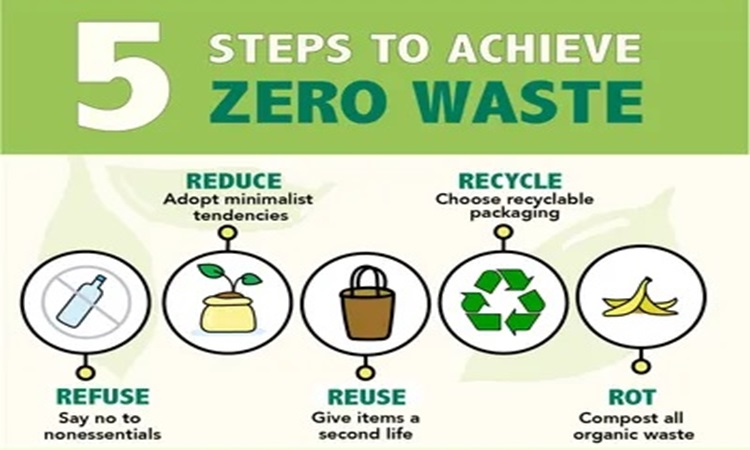What is Zero Waste Management and its Principle?

Zero waste management is an approach to waste management that aims to minimize the amount of waste sent to landfills and incinerators by reducing, reusing, recycling, and composting materials. The goal of zero waste management is to design and manage products and processes in a way that eliminates waste generation altogether or maximizes resource recovery and reuse.
Key principles of zero waste management include:
- Source Reduction: Minimizing waste at the source by redesigning products, packaging, and processes to use fewer resources and generate less waste.
- Reuse: encouraging the reuse of products and materials to extend their lifespan and reduce the need for new resources.
- Recycling: recycling materials such as paper, plastic, glass, and metal to divert them from landfills and conserve natural resources.
- Composting: composting organic materials like food scraps and yard waste to create nutrient-rich soil amendments instead of sending them to landfills.
- Extended Producer Responsibility (EPR): holding producers responsible for the end-of-life management of their products, encouraging them to design products for durability, reuse, and recyclability.
- Community Engagement: Involving communities in waste reduction efforts through education, awareness campaigns, and participation in recycling and composting programs.
zero-waste hierarchy and cradle-to-cradle thinking
- Zero Waste Hierarchy: The zero-waste hierarchy is a set of guidelines that prioritize waste reduction strategies in a hierarchical order, emphasizing the most preferable methods for managing materials. It typically consists of the following levels, from most to least preferable:
- Refuse: avoid the generation of waste by refusing unnecessary products or materials.
- Reduce: Minimize the generation of waste by consuming less and adopting more efficient practices.
- Reuse: extending the lifespan of products and materials by reusing them in their current form or repurposing them for other uses.
- Recycle recycling materials that cannot be refused, reduced, or reused to extract raw materials for manufacturing new products.
- Recover: recovering energy from non-recyclable materials through processes like waste-to-energy or anaerobic digestion.
- Dispose: disposing of any remaining waste in an environmentally responsible manner, such as through landfilling or incineration.
- Cradle-to-Cradle Thinking: Cradle-to-Cradle (C2C) thinking, also known as cradle-to-cradle design, is a holistic approach to product design and manufacturing that is inspired by nature’s regenerative processes. It considers the entire lifecycle of a product, from raw material extraction to disposal, aiming to create products that are environmentally beneficial throughout their lifecycle.
Key principles of cradle-to-cradle thinking include:
- Material Health: Ensuring that materials used in products are safe for human health and the environment and can be safely returned to the biosphere or reused in the industrial cycle.
- Material Reutilization: designing products and materials so that they can be disassembled and recycled or reused at the end of their lives, rather than becoming waste.
- Renewable Energy: Using renewable energy sources in manufacturing processes to minimize environmental impact.
- Water Stewardship: Minimizing water usage and ensuring that water discharged from manufacturing processes is clean and safe for ecosystems.
- Social Fairness: Promoting social equity and fair labor practices throughout the supply chain.
Cradle-to-cradle thinking aims to move beyond the linear “take-make-dispose” model of production and consumption towards a circular economy where materials are continuously reused and regenerated, minimizing waste and environmental impact.